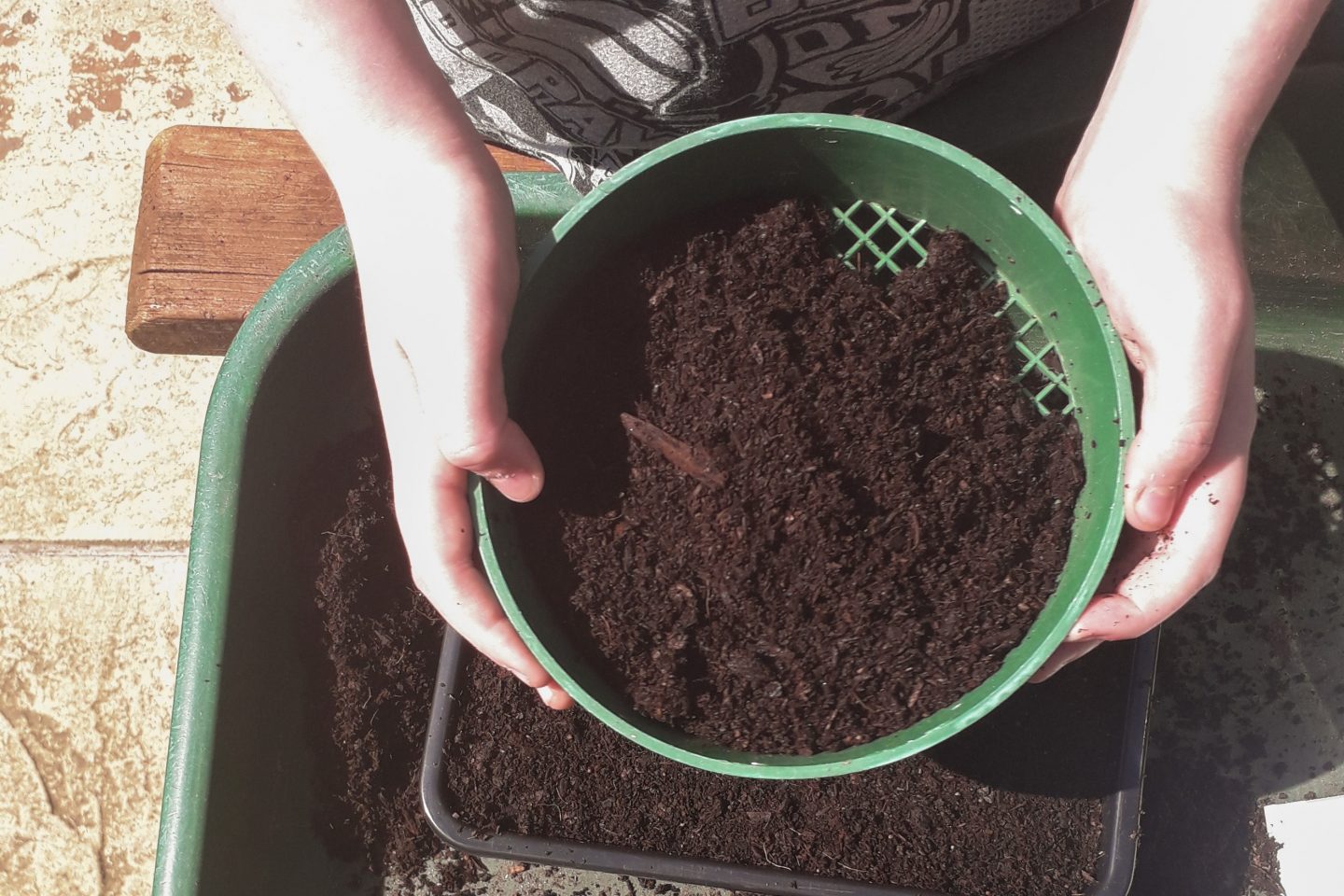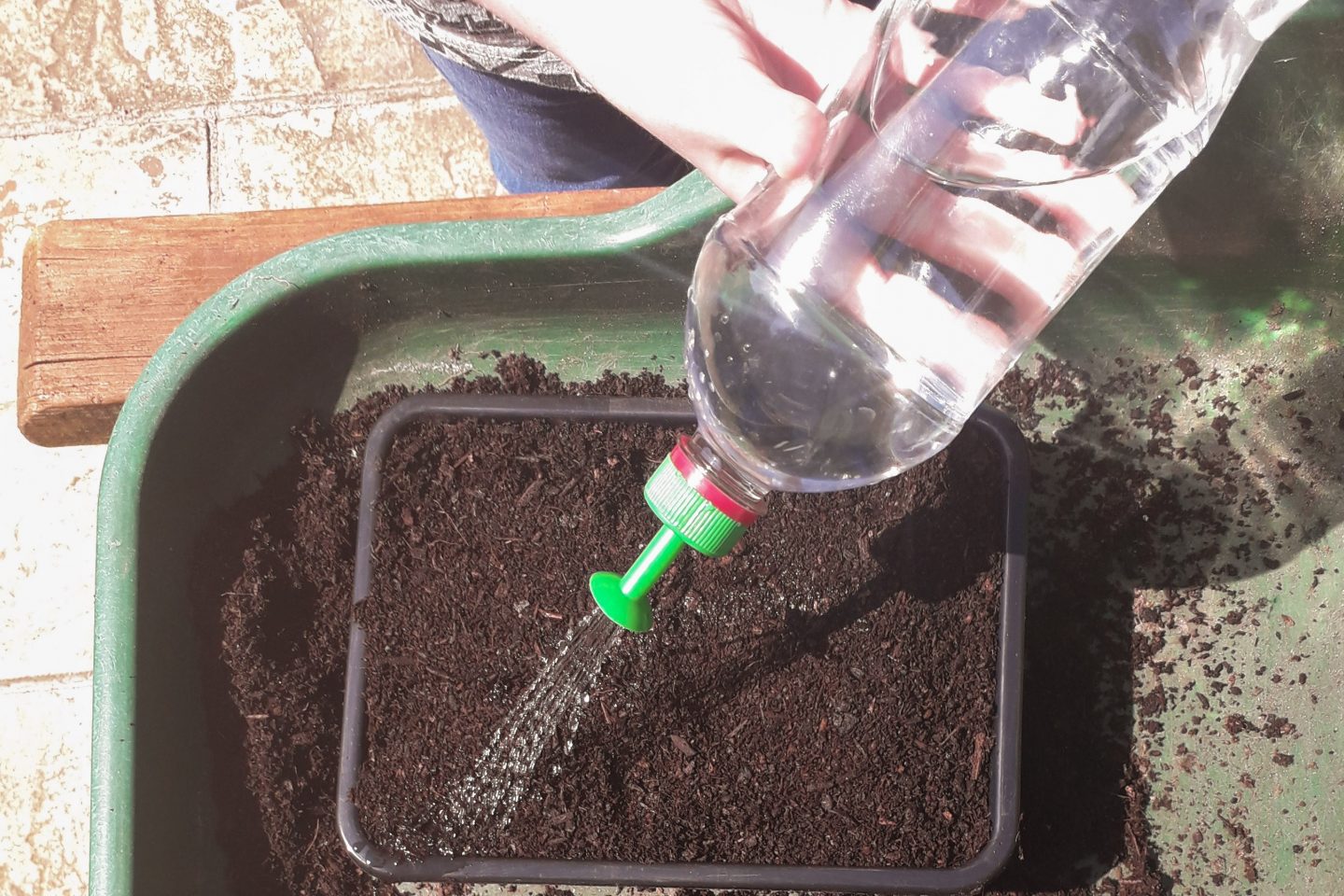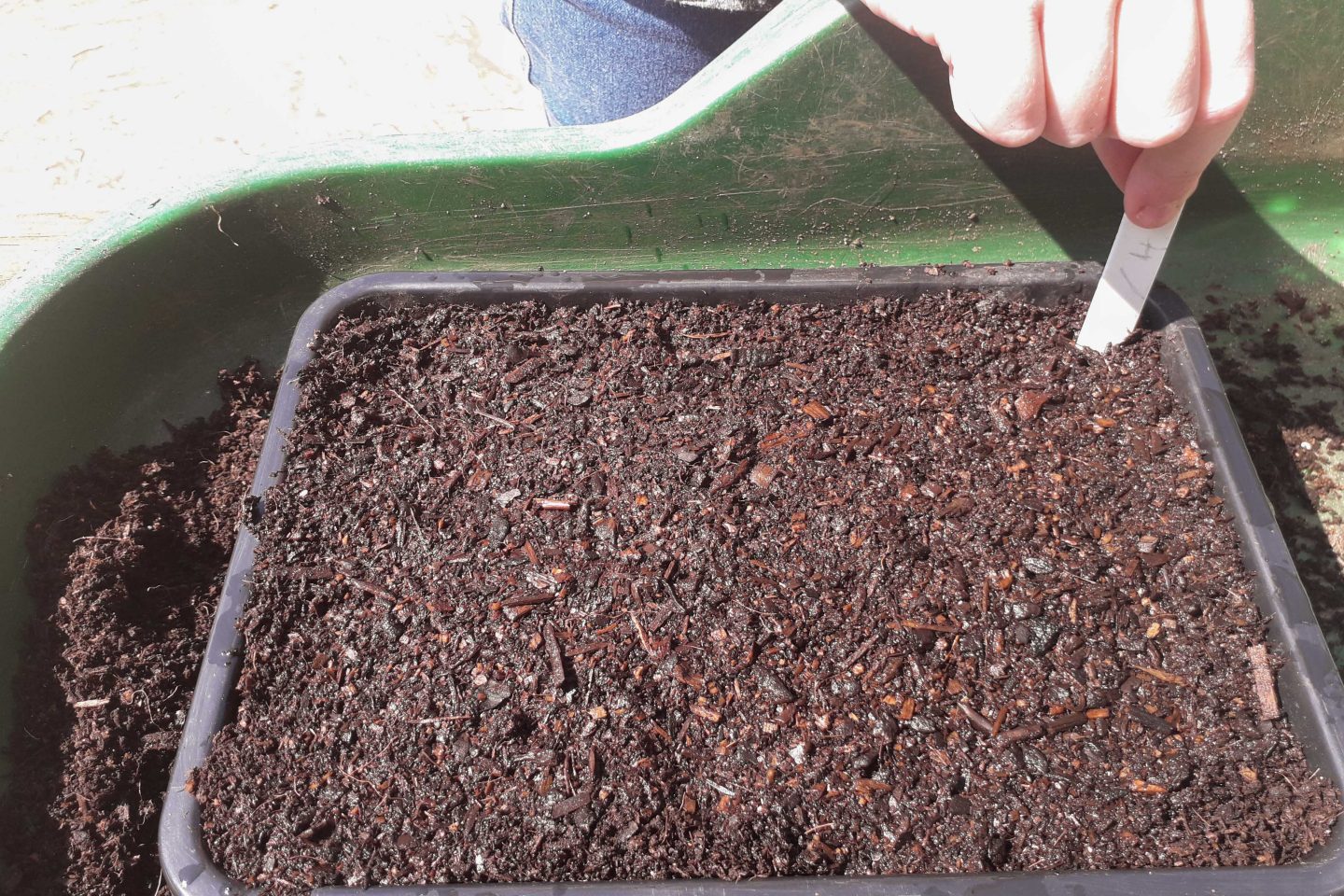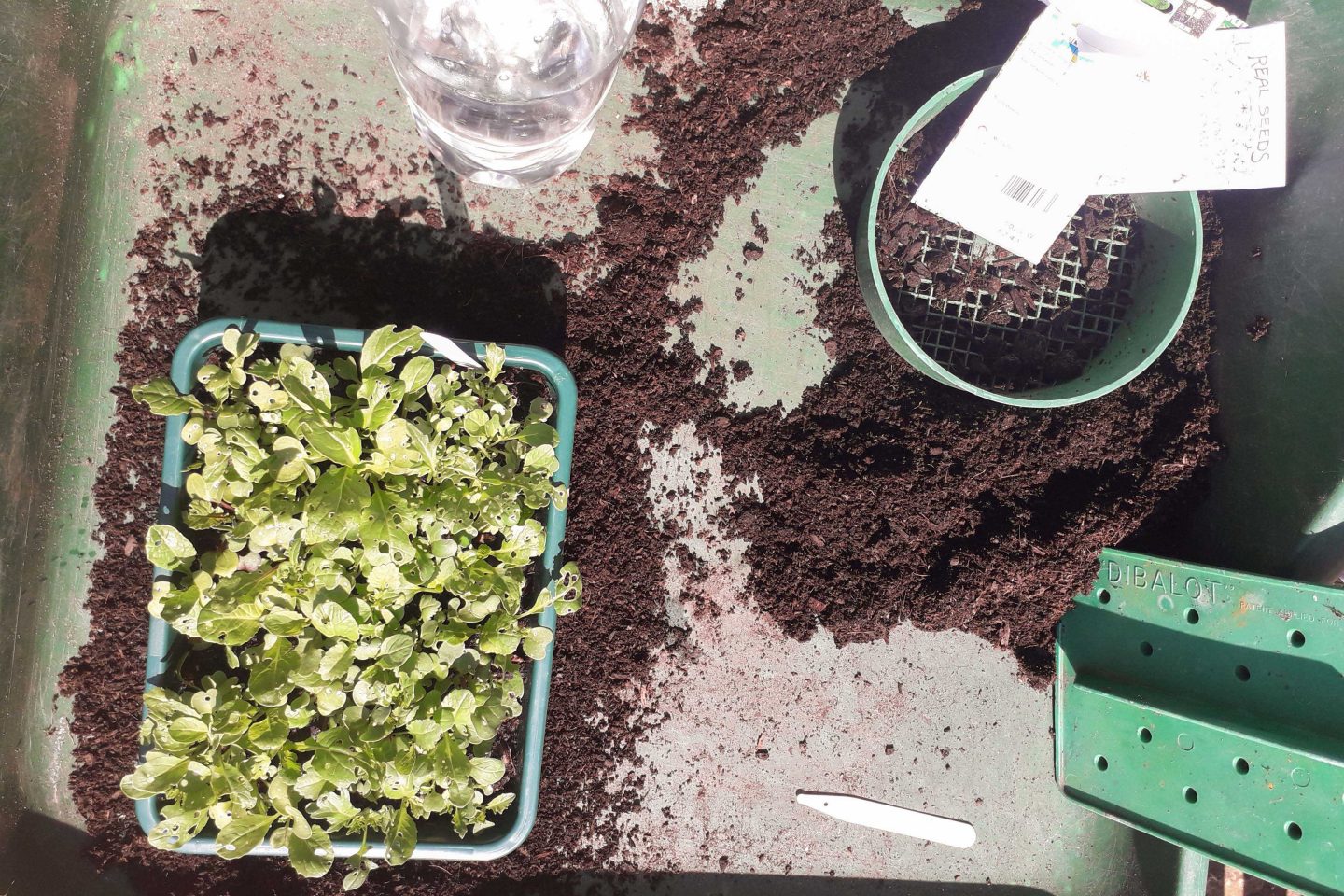Helpful information
Timing: All year around
Where to do it: Indoors
Garden space: Indoor space, no garden

Timing: All year around
Where to do it: Indoors
Garden space: Indoor space, no garden

What are microgreens?
There isn’t one specific plant called a ‘microgreen’. Microgreens are a wide range of plants that you harvest while they are still young and tender.
Some of the many plants that can be grown as microgreens include salad leaves, pea shoots, beetroot, kale, parsley, cabbage and broccoli. This means microgreens can be a range of colours, textures and flavours.
Microgreen seeds
Even though microgreens can be different types of plant, when you buy seeds you can find packets that specifically say microgreen seeds on them.
The packet should also say what type of microgreen seed it is, for example chard or broccoli microgreen seeds.
Benefits of microgreens
Growing microgreens provides many wellbeing benefits for you, like the satisfaction of nurturing plants from seed.
Microgreens are also very nutritious. This will vary depending on plant, but expect a host of beneficial vitamins and minerals. Given how nutritious they are and easy to grow in all sorts of spaces, research has looked into whether microgreens could help with global malnutrition, or even be grown in space.
Where to grow microgreens
Microgreens are perfect to grow indoors. A sunny windowsill is ideal.
You could try growing them outdoors, particularly if you have a sunny sheltered balcony or spot in the garden. But, for a reliable year round supply, we recommend growing indoors.
Growing microgreens without soil
It is possible and some people do grow microgreens without using soil. Instead, they are grown in water or some other medium.
In this guide, we focus on growing microgreens in trays in soil.
Essential items
Optional items
As growing microgreens has become increasingly popular, you can now find a variety of microgreen kits. These come with all the equipment you need. Some use coir blocks instead of small seeds and compost, which can make it less fiddly.
Follow these steps to grow microgreens with ease.
Step 1: Gather equipment
Get all your equipment together where you will be working
Make sure the place you are working at is a comfortable height. You want to be able to reach everything you need easily, especially if you have any difficulties with mobility.
If you are working sitting down, have your elbows and shoulders at right angles. This avoids pressure on tendons and joints.
Step 2: Fill seed tray with compost

Fill the tray with compost. You want the compost level to be just below the top of the tray.
You may find a compost tidy tray or large washing up bowl helpful to work in. This keeps all mess contained within one area.
You may find it easier to use a modular seed tray. This is a seed tray with many different cells or sections.
Step 3: Sow seeds

Sow your seeds. Check the seed packet to see what depth they need to be sown at. Some varieties can be scattered on the surface. Others, like peas and brassicas, need to be planted below the soil.
It may help to tip the seeds from the packet into a saucer, plate or bowl first. This can make them easier to deal with.
If you are blind or have any visual impairment and using a modular seed tray, you can sow seeds by feeling from section to section.
Find more advice on making seed sowing easier in our guide to sowing seeds in trays.
Step 4: Cover with compost

Cover the seeds with a thin layer of compost. If it helps to get a find consistency of compost, you could use a sieve. Or, rub the compost between your fingers and remove larger pieces.
Step 5: Gently water

Step 5
Water the compost gently, taking care that the compost and seeds do not run off the top of the tray.
A bottle top waterer is a good way to reuse a plastic bottle and water gently indoors.
Step 6: Label your plants

Add a plant label to your tray. Include the variety and date sown. Having the date will help you know if your seeds have germinated successfully.
Step 7: Put in place
Place the seed tray somewhere the plants will germinate. A sunny windowsill is good.

Watering
Check on your microrgreens every day or two. Make sure the compost is still moist. You could try gently lifting the tray. If it feels heavy, it probably doesn’t need any more water.
Harvesting microgreens
The seeds will germinate in around two weeks, or possibly sooner. Wait a week or two more after you see the first shoot. This will give your microgreens time to develop their true leaves. This means they are ready to be harvested.
To harvest, use scissors and cut just above the compost level.
Do microgreens regrow after cutting?
Sometimes microgreens will regrow after cutting. This doesn't always happen and depends on the plant. You may be able to get a second harvest from your plants. A third is less likely and your plants may start to lose taste and nutrition.
If you would like a continued supply, try sowing seeds every couple of weeks. This is known as ‘successional sowing.’
Microgreen recipes

Microgreens are often used in salads or in sandwiches.
If you feel like trying something a little different with your microgreens, Yummly has a range of microgreen recipe ideas.